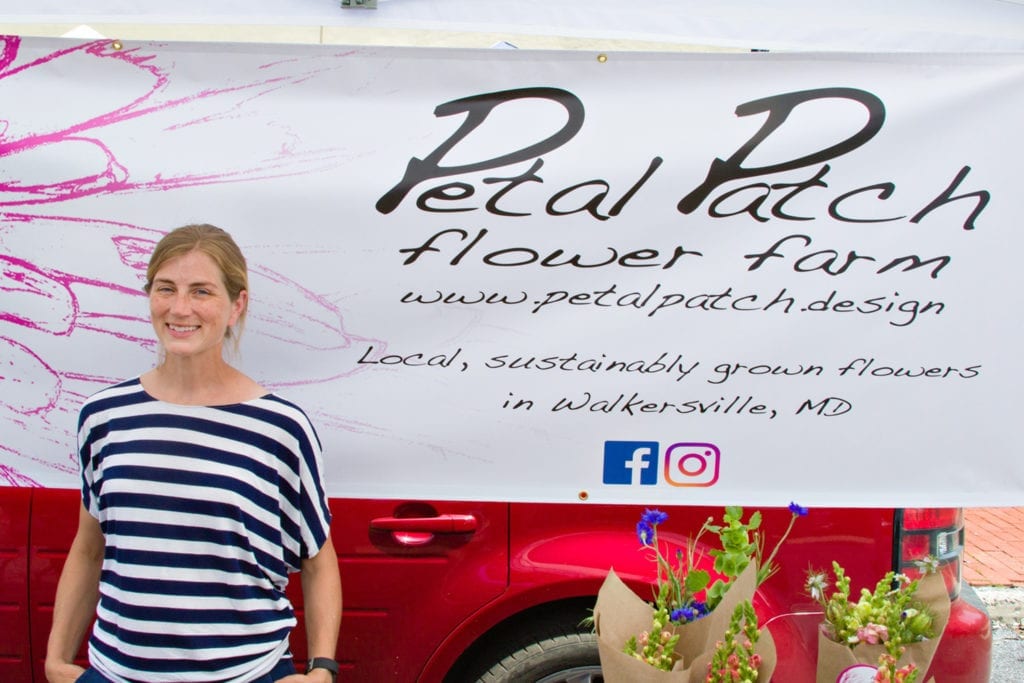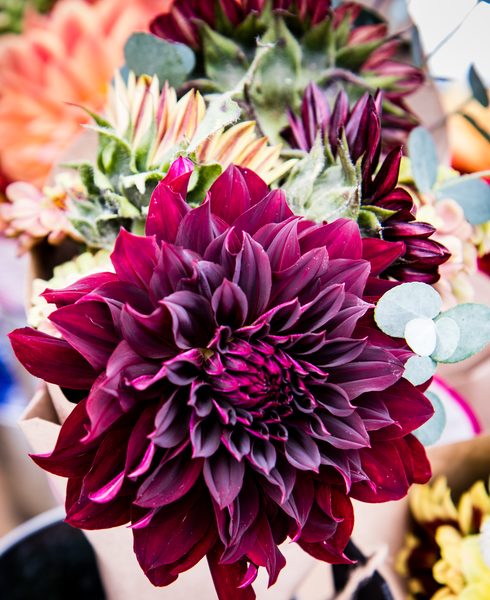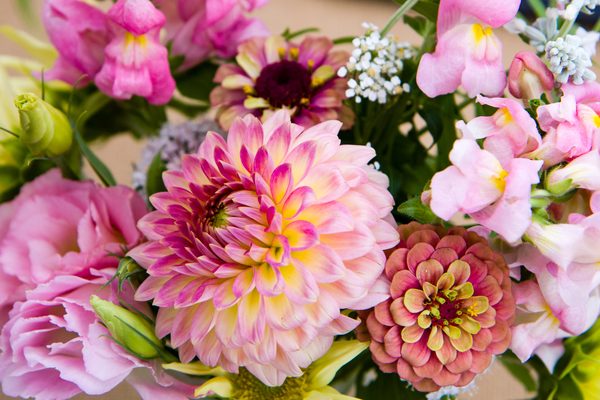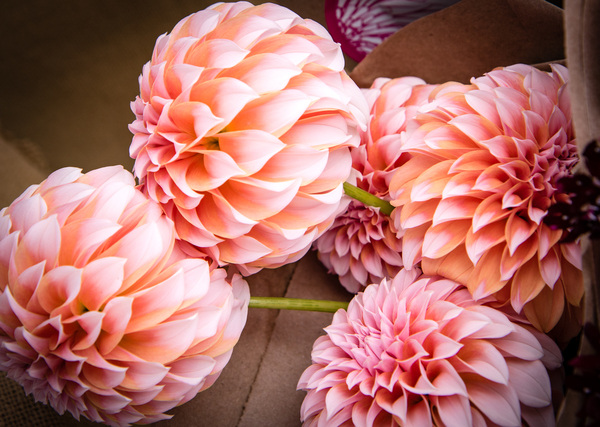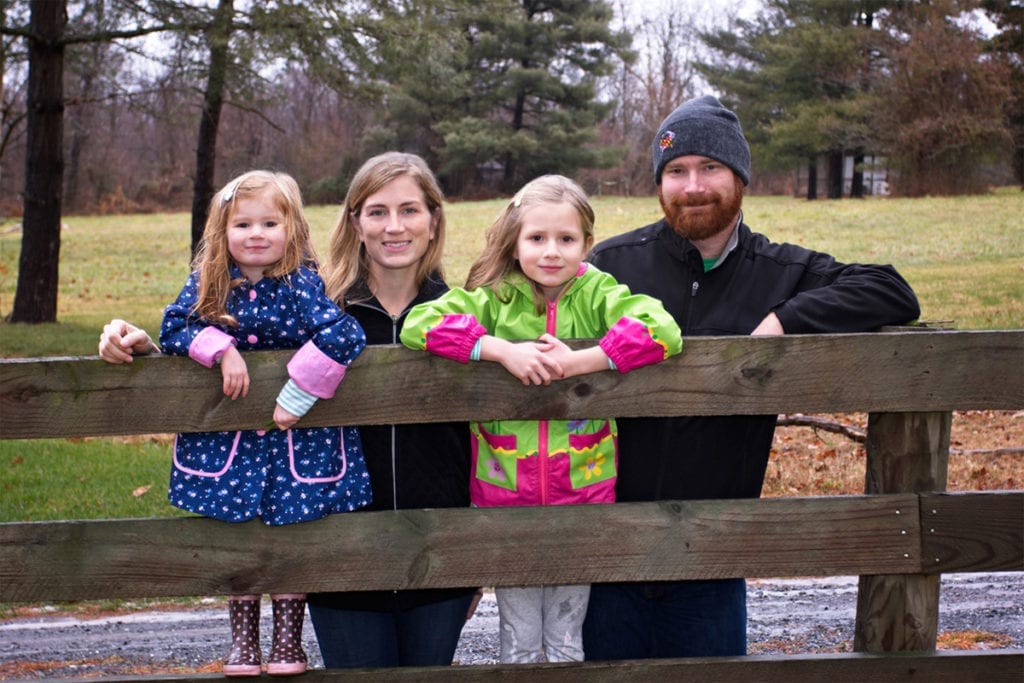A Day in the Life of a Flower Farmer
March 17, 2018
In my quest to use more American Grown flowers in my designs, I have been lucky enough to become friends with some amazing farmers along the way. Julianne and Tim Du Four are the owners of Petal Patch Flower Farm. Their flower farm is less than 15 minutes away from me, just outside of Frederick, MD. Supporting their farm means that I am supporting local businesses, which in turn supports the local community and its infrastructure. Buying my flowers from local farms also ensures that I’m helping to reduce the carbon footprint of my company. Many flowers that we use in weddings are imported from South America and Europe. Shipping these flowers uses a significant amount of resources, so when I am able, I buy flowers from American flower farms to reduce this as much as possible.
I wanted to understand more about what goes into having a flower farm, so I asked Julianne to write a guest post about her experience. Welcome Julianne!
Blair has kindly asked me to describe a bit about the process of growing flowers commercially. While everyone is going to have a different process, I can share what it’s like for me and how I go about making sure I have an abundance of beautiful flowers all season long.
It’s all about planning. Here it is the beginning of 2018 and nearly everything was purchased and scheduled last year. The tulips I’m anxiously awaiting? I bought them in June of last year. This ensures that I get the best new varieties and the quantity that I want. It’s a bit of a gamble too as I’m not quite sure what is going to be trendy the next year. Yup, I follow fashions and wedding sites and that Pantone color of the year! My peonies and perennials take 2-3 years to mature and are a big investment, so they tend to be “safe” colors like white and pink. And then there are seeds. I love seeds. I would buy all the seeds if I could. Tiny packets of possibilities and hope and color. They make me so incredibly happy. To stop myself from purchasing everything I see, I plan my field space. Several times. As my season winds down in the fall, I start assessing the annuals: what did I do right, what was a flop, what needs to be succession planted, what needs more sun, shade, water? I research, research, research. I look for new flowers, old flowers that are popular again, flowers no one local is growing, flowers that are odd colors, flowers that smell good, flowers that are hard to grow for a home gardener. And of course, flowers that fit the wedding trends for the upcoming year. I get out my paper map of my field and start filling in the blocks. And then I erase and do it again. (I’m not particularly handy with a computer so it’s paper and pencil for me!) Then I buy more seeds and start re-doing everything a third, fourth, fifth time. After the first round is planned, I start planning what goes in when those spring/early summer flowers die. What are my backups in case of crop failure? And I even as I meticulously fill in every last square foot of space, I know that it’ll all change come spring and summer. The best laid plans have nothing on Mother Nature. And I’m okay with this. It’s what keeps it interesting and frustrating and rewarding.
Part of what I plan in the fall/winter is the seed starting scheduling. As a fairly new commercial grower, I spend a lot of time learning about each plant and its proclivities. I start my hardy annuals in late summer, so they can get good root systems in the fall and bloom early. Next come the slow growers like Lisianthus. That’s a mid-December start in the hopes that I can plant them out in March, so they can get their long tap root established. And so on. My preferred way to start seeds is in soil blocks. Tiny ¾” cubes of dirt I make with a mold. These little blocks keep the seedlings from becoming root bound as the roots spread out and grow below the cubes. It lessens transplant shock and encourages healthy roots. Plus there’s no plastic waste. Assuming I was a good plant mother and all my seedlings made it, it’s time to plant.
Planting time is a marathon. A race to beat the clock, beat the weather and beat those sneaky animal pests! Like any young living thing, seedlings need care. I use a fish emulsion fertilizer to stimulate root development and keep an eye out for sneaky fungus and tiny pests like aphids. Plant health can change overnight so it pays to be vigilant. As the plants develop buds I switch to a fertilizer to encourage blooms instead of green growth. I pray for rain, but not too much. I hope for breezes to prevent fetid air that breeds disease, but not too windy that it knocks the plants over and destroys the flowers. The plants need sun, but clouds are super nice because they keep the plants from scorching. Since I’ll never get the perfect amount of any of those things, I use different methods to ensure the flowers get the best growing conditions. Irrigation helps each summer when Maryland decides to have a drought. And all my flowers are netted to prevent them from falling over – although this isn’t foolproof. Shade cloth must be strung up at different times to cool off certain crops, or help them stretch taller for those desirable long stems. All this time, I weed. I can’t walk by a row without bending down to pull some interloper out.
The flowers have finally developed buds, they’re at the right stage for picking, all the stars have aligned and I can harvest! Just like each plant has its own growing specifications, they have their own harvest needs too. The only thing in common is that all harvest happens in the early morning hours, just at sunrise or as the sun is setting. There’s not a single flower that likes to be cut in the scorching heat of a summer day. Spring flowers like to be stored in the cooler, summer flowers like zinnias and celosia don’t go in the cooler at all. Some flowers need preservatives to help them hydrate and recover from the shock of being picked while others need deep, deep water to help with uptake. It’s a constant learning process and a bit like a science experiment at times. That’s a good way to describe farming of any kind. You’re always learning, always testing and always saying “next year.”
Growing flowers is a labor of love. A year or more to see the fruit of your labor and there’s no guarantee you’ll be able to sell it. A fellow grower asked me once “why do we do this?” My reply was “because we love heartache, misery, hard labor and the exquisite beauty that can take your breath away.”
Thank you so much Julianne for taking time out of your day to tell us about the wonderful work you’re doing! I love having Petal Patch flowers as a resource and I can’t wait for wedding season to start so I can include your beautiful blooms in my work!
Here are a few more images of Julianne and her gorgeous family and some of the dahlias and sunflowers she grows.
